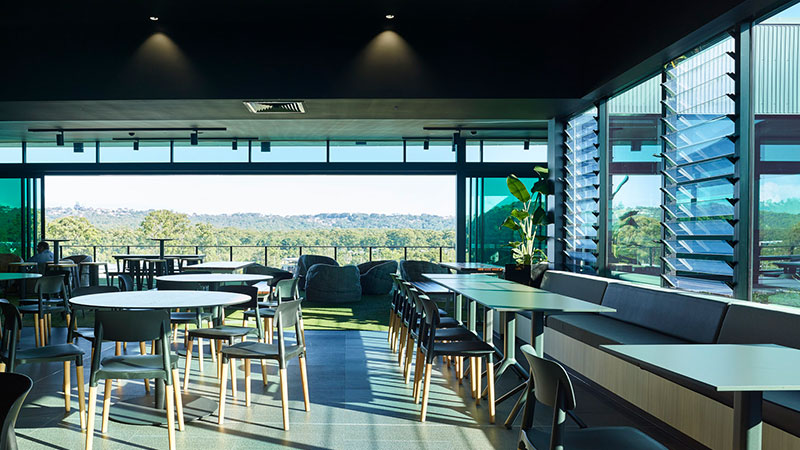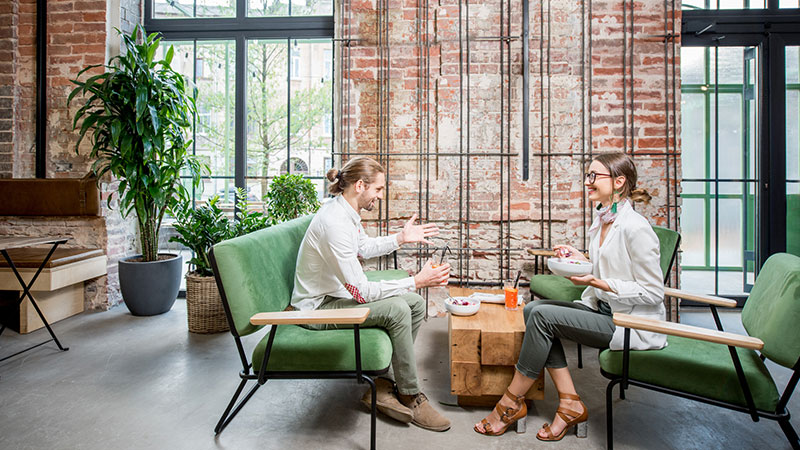How Covid-19 Started a Workplace Evolution
The rapid spread of the coronavirus has prompted many to reevaluate what really matters—as our cities, buildings and workspaces are reimagined in response to the global pandemic.
To date, 2020 has caused many businesses to consider how effectively we do business as we negotiate the “new normal” post-Covid-19.
“The way we’ve dealt with Covid-19 in transitioning to working from home has been done quite successfully,” Cottee Parker’s Sydney studio leader Angelo Di Marco said.
“I see working from home a few days a week to be more commonplace beyond Covid-19, so moving forward this really changes the scene for how we use our office space.”
The national architectural firm uses four strategic pillars to deliver high-performing teams and outcomes: the alignment of business values, culture, technology, and workplace environment.
“Businesses that are surviving in the restrictive Covid-19 related measures have invested heavily in the four pillars—enabling them to make the transition to working from home,” Di Marco said.
“But those who didn’t are probably struggling to make the transition. And this may be exposing operational cracks.”
“As one of the four pillars—the office workplace—crumbled in front of our very eyes, and we have to adapt.”

Adapting: “Workplaces should be fun”
“Imagine what day one of back to the office will look like?” Di Marco asks.
“How will the office feel on our return? Things won’t be the same on that first day.”
Cottee Parker's senior associate Dee Passenger says the purpose of a workplace is to provide the “heart” of the business.
“Thoughtful workplace design improves efficiency and productivity, reduces stress and improves staff health and wellness,” Passenger said.
“When staff are happier they are more engaged with the business and their co-workers, leading to an optimum office culture.”
Di Marco says there’s never been a better opportunity to improve your existing workplace or fit-out than now.
“We have turned our attention to what an organisation should think about when we return to our office.
“After Covid-19, our workplaces will need to be replenished to re-generate the organisation.”

Passenger says this will require a rethink, with the responsibility of employers to provide Covid-safe environments.
“Considerations such as staff density, increased use of technology, automation of touch-points—such as doors or soap dispensers for example, and use of inherently anti-bacterial materials are some of the details to be considered in a safer workplace,” Passenger says.
It's this process which Di Marco describes as prompting the “workplace evolution”.
“Which is going to happen post pandemic,” he says.
“There will be thinking and questions as to the purpose of an office. How much space do I need? What is the space for? What are we coming to the office for?
Cottee Parker believes the shutdown period offers space and time to make choices about change, as we look ahead, beyond Covid-19.
“While technology has enabled us to “meet” and “chat” online, isolation has reduced our ability to work together efficiently so spaces that can enable collaboration and social interaction safely will be fundamental to re-establishing workplace culture and teamwork,” Passenger says.
“I see the trend for office space moving towards more collaborative spaces that incorporate our new experience in video communication bringing remote and physically present staff together — which, following the shutdown, is needed more than ever,” Di Marco said.
“The point when we get back together, the office should be fun. We need it. Not just rows and rows of desks.”
With most people currently working from home, workplaces are empty, fit-out contractors are hungry for work, landlords are keen to lease spaces.
“There’s never been a better opportunity to improve your existing workplace or fit-out than now.”
The Urban Developer is proud to partner with Cottee Parker to deliver this article to you. In doing so, we can continue to publish our free daily news, information, insights and opinion to you, our valued readers.














